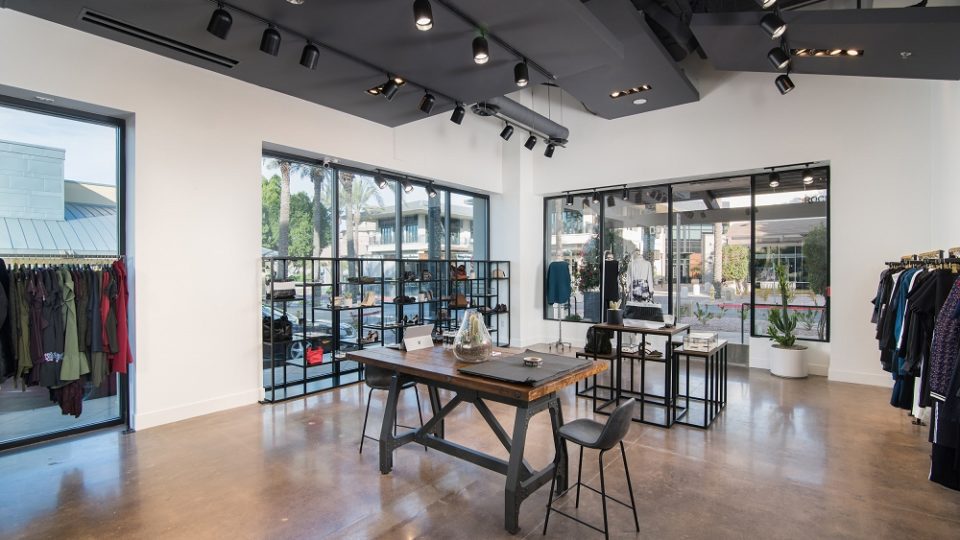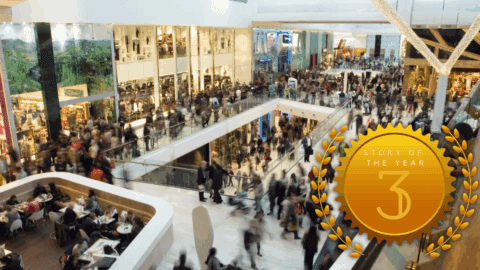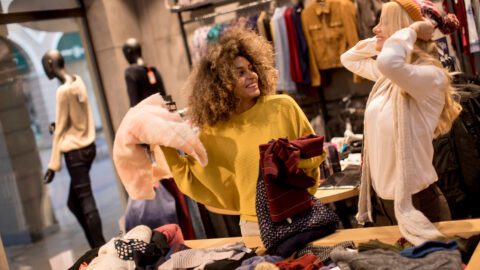Launched in 2009 with a specific focus on designing apparel for women 35 years and older, Ruti built its following by sticking to three rules for apparel design: it must be cool, flattering and practical. Founder and CEO Ruti Zisser also wanted to connect specific items to customers who would indeed find them to be cool, flattering and practical. The retailer is taking steps to accomplish this goal by personalizing the in-store shopping experience with a proprietary AI-powered platform that leverages an internally built CRM solution and opt-in-only facial recognition.
With this technology deployed across nine boutiques (and a 10th soon to open in Dallas), Ruti can offer personalized recommendations based on each shopper’s fashion preferences, size, likes and dislikes, ultimately helping in-store stylists and designers discover which clothes will be most flattering for shoppers.
“When customers come into the store now, we can recognize them and we will have all this information that tells us this customer, for example, hates fitted tops or clothing — she just likes everything loose,” said Zisser in an interview with Retail TouchPoints. “She loves to buy more colorful apparel, or even wants to gain approval from a friend due to her styling choice. We look for any information that can make the customer feel more comfortable about their purchase. It just makes the lives of everyone that works for Ruti much easier, and customers feel much better.”
The inspiration for including facial recognition came from Zisser’s close proximity to many Silicon Valley tech companies. In particular, Zisser had always wanted to work with a company to develop glasses that would enable store associates to visualize what a shopper’s preferences were immediately upon their entry into the store.
When a shopper first walks into a Ruti store, a series of cameras scan and take photos of her face. Pending customer approval, those photos (as well as items related to a purchase, if one is made) are stored in the retailer’s CRM system.
When she returns to the store, those same cameras can scan the customer’s face and identify her as a repeat customer, pulling up her shopping history and customer profile within seconds. The technology automatically pulls five to six items from the most recent Ruti collection, along with pictures of those items, and shares recommended sizes for the sales associate to pull, which helps ensure the customer will have an easy try-on experience in the dressing room. Nailing this part of the process down is vital for Ruti, since repeat customers account for 75% of the company’s sales.
The system continuously builds customers’ profiles, including past purchases, items they’ve tried on and other attributes. In addition, customer feedback gathered on the database influences the design process for upcoming collections.
“If I showed my stylists pictures of the last 10 items that the shopper bought, they have a good direction of where they need to go next,” Zisser said. “They still need to understand why personalization is important and to love fashion, but the rest of the job is much easier for them. This especially helps when we have new employees working for us that aren’t as versed in Ruti products.”
Ruti Brings CRM Data Online To Build Consistent E-Commerce Experience
In October, Ruti raised $6 million in a Series A funding round led by Viola Ventures. The investment was designed to expand development of the proprietary technology in its boutiques and bring it to the e-Commerce site, as well to further integrate the experiences within both channels.
“When I shop at any big web site, I’m always thinking, ‘Why don’t they know exactly what I like?’ because I shop at this retailer so many times and basically it will be the same four or five designers,” Zisser said. “Give me a landing page of 40 or 50 items that I should look at, and I will do it. But as of now, I still have to go all throughout most web sites to find what I like. I figured, if I could give consumers this help, they can make better buying decisions. The idea is to copy/paste from the store — we use information from the CRM and we add more information from the online shopping experience.”
Zisser noted that Ruti has an advantage in this scenario, because many retailers today start by implementing CRM solutions online and then expand it to the stores, which is opposite to what Ruti has done. While many retailers collaborate with a third-party provider to deploy a CRM platform, Zisser thought it made the most sense for the Ruti brand to build a system of its own.
“Most of the CRMs for retail people are too complicated,” Zisser said. “Retail employees aren’t sitting at a desk, and they don’t often have the room or the time to use the platform effectively. I told our development team that they had to work in a store for a few days to understand what we would need for a retail audience. The developers and product team members spend time with the customers, listen to them and ask them how they feel about the products, to get a more nuanced opinion as to why they do or don’t click on a certain product online.”













